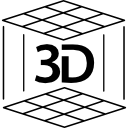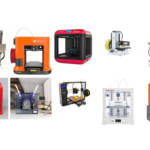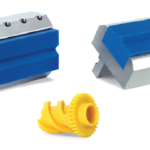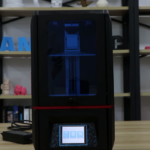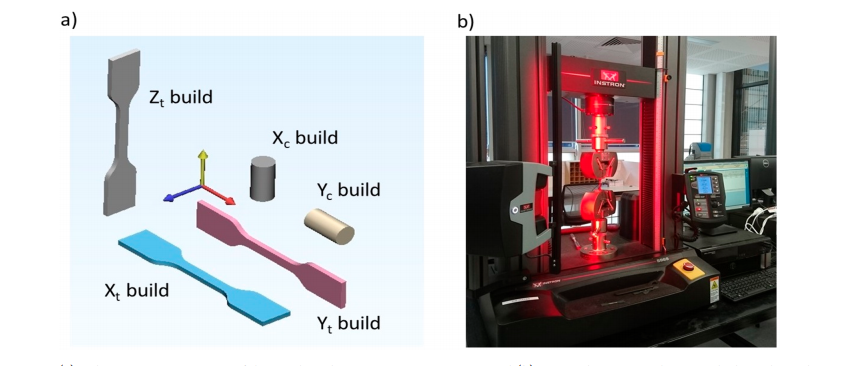


In the recently published ‘Investigation of closed loop manufacturing with Acrylonitrile Butadiene Styrene (ABS) over multiple generations using Additive Manufacturing,’ authors Mazher Iqbal Mohammed, Daniel Wilson, Eli Gomez-Kervin, Bin Tang, and Jinfeng Wang explore the impacts of FFF 3D printing on acrylonitrile butadiene styrene (ABS) during multiple recycling processes.
As 3D printing increases in popularity, so does the amount of discarded plastic. And while PLA is biodegradable, ABS is a typical plastic that is not—presenting environmental issues. In this study, the researchers hoped to explore FFF systems in regard to their low power consumption which may lend themselves to a path of greater manufacturing sustainability.
The researchers began using virgin ABS, put through two successive closed-loop filament extrusion and 3D printing phases. In this study they used 100 percent recycled 3D printed ABS, made into filament for re-use—allowing them to investigate parameters and potential for defects along the way.
“Studies have previously reported that changes in melt flow index and mechanical properties occur with ABS after recycling using injection and cast-molding,” stated the researchers. “However, to our best knowledge, no study has examined the influence of multiple closed-loop recycling phases using AM, where the grade of ABS and the thermal process regimes differ from manufacturing by molding processes.”
Virgin ABS pellets were extruded as filament and then 3D printed into parts. The researchers made sure to use plastic from one source only to make sure any differences would be directly comparable. Granules were produced in a uniform size, separated with a sieve with a mesh size of 5 mm.

“To determine the average pellet/granule size, 20 ABS pellets or granules were randomly collected from the source batch and their longest lengths were measured and averaged,” stated the researchers.
While the study centered around the use of virgin ABS, the research team also experimented with one-time, two-time recycled ABS, as well as samples of 90, 80, 70, 60, 50, 40, 30, 20, and 10% virgin ABS. They assessed extrusion flow rate, 3D printing and characterization, polymer analysis, and mechanical property characterization.
In some cases, ‘nonuniformity of granules’ causes blockages, as well as ‘pinning’ because of sharp edges. The researchers tried agitating granules during extrusion to keep filament flowing correctly. Ultimately, the research team found that the FFF 3D printer performed very well with recycled ABS, and over multiple recycling generations too. They deemed the process successful and one that could indeed serve as a valid method of manufacturing with ‘several generations of use.’
“Arguably, FFF has currently had its greatest commercial success in production of concept prototype devices by design companies or in the manufacturing of ornamental items such as toys and models, which generally have no strict mechanical strength requirements. Therefore, we believe that the use of recycled ABS of either one-time or two-times recycled variants could feasibly replace virgin polymer filaments in such applications, as the measured decline in mechanical strength would not impact the function of the end parts or prototypes,” concluded the researchers.
“FFF holds considerable potential for sustainable management of ABS plastics through its reintroduction into wider industrial manufacturing, potentially creating value from what is otherwise a growing burden to resource-recovery sites and landfill.”
ABS is one of the most popular 3D printing materials, for users on every level whether they are creating new materials and composites, refining issues with adhesion, or even making workstations. What do you think of this news? Let us know your thoughts! Join the discussion of this and other 3D printing topics at 3DPrintBoard.com.
[Source / Images: ‘Investigation of closed loop manufacturing with Acrylonitrile Butadiene Styrene (ABS) over multiple generations using Additive Manufacturing’]
If you're in need of 3D interior and exterior design services in the USA, our platform offers a comprehensive solution to bring your architectural projects to life. Through our service, you can request detailed 3D renderings that showcase both the interior and exterior of your property. Whether you're designing a home, office, or commercial space, our experts deliver photorealistic visualizations that highlight every element, from furniture arrangements to building facades, ensuring that your vision is accurately represented.
Through our website, you can easily access 3D interior and exterior design services tailored to your specific needs. With our help, you'll be able to create stunning visual representations of your designs, allowing you to present them to clients, investors, or stakeholders in a professional and engaging manner. Our team focuses on bringing out the best in your designs, ensuring that both the interior spaces and exterior elements are rendered with the highest level of detail and realism.
